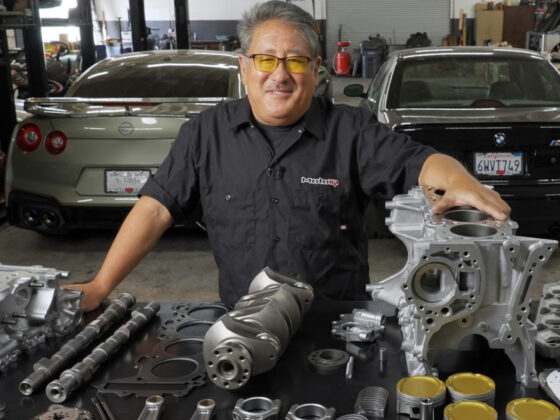
Our piston uses anti-detonation grooves before the #1 compression ring. These grooves allow the crown of the piston to expand less under the very hot conditions of detonation and reduce the chances of scuffing. The grooves also act like a labyrinth to provide the #1 ring with some protection from detonation shock waves. The #1 compression ring has lateral gas ports to improve the seal at high rpm. The piston pin was moved high into the pin boss to accommodate the increase in stroke. A pressure accumulation groove helps improve the seal of the #2 compression ring. The pistons were given CTP Cryogenics’ new high-strength aluminum treatment and the ring grooves and pin bosses were WPC treated, this reduces friction and improves wear and friction in the ring gooves preventing micro-welding. Freeing up the rings improves seal.

Our piston got some 5-axis under-crown milling to keep weight to a minimum without sacrificing any needed strength.

Since this was a high-load turbo engine, we specified duel pin oilers. These are passages for oil to travel directly to the piston pin pressure fed by oil pumped off the cylinder walls by the oil ring. The 360-degree groove helps retain and transfer the oil.

The piston pin is a thick wall straight pin suitable for turbo use. Tapered narrow lightweight pins can flex and grab the bushing out of the small end of the rod and boom! The pin was Cryo and WPC treated.

The rings are thin, low-tension parts for less flutter. The #1 compression ring is steel with a hard nitrided finish for a long life. The #2 ring is iron with a Naiper profile for fast break-in and good seal. The oil ring is narrow with low friction rails. The rings were Cryo and WPC treated for long life and even less friction.




3 comments
Dreams.
What are the boundary conditions for the FEA images? Something looks a little strange in how forces are applied to the little and big end… Are they not treating it as a pinned connection with bearing loads for the application of the loads?
The load would not be pure compression as max load is a few degrees off of TDC.